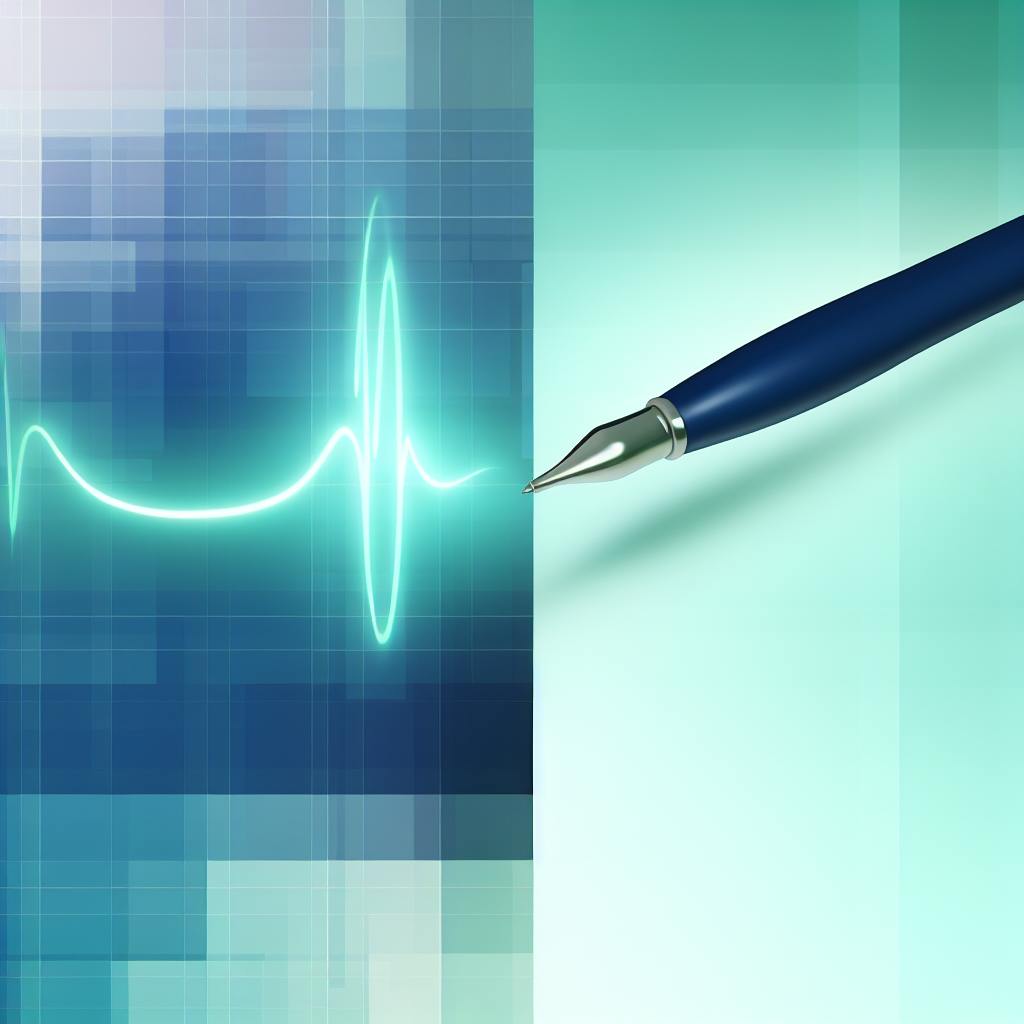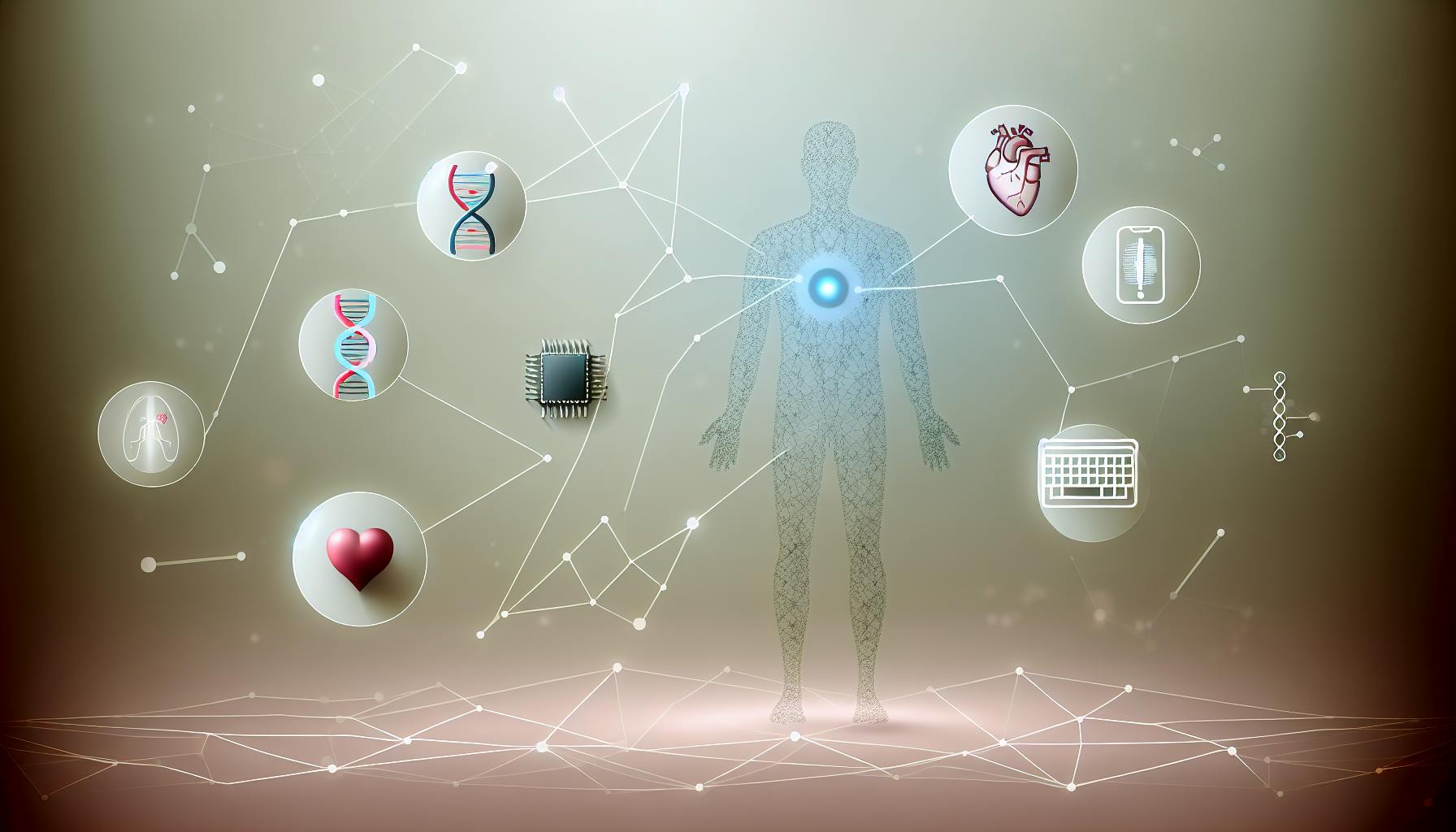At first glance, speech recognition and voice recognition might seem identical, but they serve distinct purposes in technology. Here's a quick breakdown of both:
- Speech Recognition: Focuses on what is being said. It converts spoken words into text, making it invaluable for tasks like dictation or commanding devices.
- Voice Recognition: Identifies who is speaking by analyzing unique vocal characteristics. It's used for security purposes, like unlocking phones or accessing personal information.
Now, let's dive into a quick comparison to highlight the key differences:
| Factor | Speech Recognition | Voice Recognition |
|---|---|---|
| What it Does | Converts speech to text | Identifies the speaker |
| How it Works | Analyzes sounds to recognize words | Analyzes voice features to create a unique ID |
| Applications | Dictation, commands for devices | Security, personalized settings |
| Accuracy | High, but varies | Very high |
| Cost | Generally lower | Can be higher due to security features |
Both technologies have their place, especially in healthcare where they can streamline tasks, enhance security, and improve patient care. Understanding their differences is key to choosing the right technology for your needs.
How Speech Recognition Works
Speech recognition goes through a few steps to work:
- Hearing you: First, a microphone picks up your voice.
- Breaking down sounds: Then, it looks at the sound of your voice to figure out the tone and speed.
- Finding words: Lastly, it matches the sounds to its library of words and puts them into sentences.
This process lets it quickly write down what you're saying as you speak.
Applications of Speech Recognition
Speech recognition is used in a lot of cool ways, like:
- Helping doctors: It writes down what doctors say during appointments, making their paperwork easier.
- Helping with health records: Doctors can talk to get information about patients, which saves time.
- Everyday gadgets: Devices like Siri and Alexa understand what you're asking.
- Making videos easier to watch: It can create captions for videos, so more people can understand them.
- Working without hands: You can write documents or search the internet just by talking.
This technology is becoming more popular, especially in places like hospitals and with gadgets we use every day.
What is Voice Recognition?
Voice recognition is a smart way to figure out who's talking by listening to their voice. Unlike speech recognition, which turns what you say into text, voice recognition pays attention to who is saying it. It looks at your voice's unique features, like how high or low it is, how fast you talk, and the way you pronounce words, to tell you apart from others.
How Voice Recognition Works
Here's a simple breakdown of how voice recognition happens:
- First, the system needs to hear your voice. You might be asked to say a certain phrase a few times so it can get a good listen.
- Then, it picks out what makes your voice special, like its pitch or rhythm, and turns these into a digital form known as a voiceprint.
- When you want to prove it's really you, the system checks how your new voice sample matches up with the voiceprint it saved.
- If your voice matches well enough with the saved voiceprint, according to the system's rules, then it knows it's you.
Applications of Voice Recognition
Voice recognition can be used in lots of ways, such as:
- Keeping things safe: Like making sure only you can get into your phone or computer.
- Helping in hospitals: Patients can use their voice to pull up their records, or doctors can use their voice to control medical devices.
- Making gadgets smarter: Your phone or smart speaker can know it's you talking and change settings just for you.
- Solving crimes: Investigators can use voiceprints to figure out who's speaking in recordings when they can't see them.
- Customer service: Banks can make sure it's really you on the phone by checking your voice.
As AI keeps getting better, voice recognition will get even smarter at telling who's who by listening to the unique parts of our speech.
Key Differences Between Speech and Voice Recognition
Let's break down the main differences between speech recognition and voice recognition in a way that's easy to get.
| Factor | Speech Recognition | Voice Recognition |
|---|---|---|
| What it Does | Turns what you say into text by listening to the sounds and how words are put together. | Figures out who's talking by looking at the unique parts of their voice. It's like a voice password. |
| How it Works | It learns how speech sounds and turns that into words and sentences, following how we use language. | It listens to how your voice sounds (like its pitch or rhythm) to make a special voice ID for you. Then it checks if your voice matches this ID. |
| How Good it Is | Really good, but not perfect. Gets things right about 90-95% of the time. | Super good at knowing it's you. Right about 98-99% of the time. |
| What it's Used For | Writing down what you say, following voice commands, making captions, helping with customer service chats. | Making sure only you can access your phone, keeping your data safe, personalizing your devices. |
| What it Needs From You | Your voice talking into a mic. It can handle different languages and noisy places. | Your voice, but it's looking for the bits that make your voice yours. More samples make it better. |
| What You Get Out of It | Text that's been written down from what was said. | A simple yes or no if your voice matches the saved voice ID. |
| Important Bits | It needs good mics, databases of speech sounds, and computers that can process audio. | It uses technology to process voice signals and save your voice ID securely. |
| How Much it Costs | Not too much. You can find it in apps or online services. | A bit more because it needs special tech to work with your voice ID. |
To put it simply, speech recognition is all about understanding what you're saying and writing it down. Voice recognition, on the other hand, is like a voice lock, checking if your voice matches the one it knows to let you in. Both use cool tech to listen and learn from our voices, but they do different things. Speech recognition helps with tasks like writing and commands, while voice recognition keeps things safe and personal for you.
Applications in Healthcare AI Scribe Software
Speech recognition and voice recognition are both super helpful for AI medical scribe programs. Let's dive into how they're used:
Speech Recognition for Efficient Transcription
AI scribes are really good at listening to doctor-patient chats and writing down what's said. This is mainly thanks to speech recognition. It uses smart tech to:
- Write down conversations between multiple people as they happen, getting it right most of the time
- Understand medical terms, short forms, and different ways of speaking
- Figure out who's talking and make sure their words are correctly noted
- Organize the written conversation into neat notes for patient records
This tech saves doctors a lot of time they would otherwise spend writing things down themselves. It also makes patient records more detailed and accurate.
Voice Recognition for Auto-Tagging Records
Voice recognition isn't used as much yet, but it has some cool potential uses in AI scribes, like:
- Recognizing doctors by their voice to know who's speaking
- Automatically adding the doctor's details to notes based on their voice
- Making sure patient notes go to the right file by recognizing patient voices
- Allowing doctors to use voice commands for editing and sending notes
By creating secure voice profiles, AI scribes could do a lot of the paperwork automatically, making things even easier for doctors.
The Future is Both
Looking ahead, AI scribes will probably use both speech and voice recognition to make things super easy:
- Speech recognition will take care of writing things down and organizing notes
- Voice recognition will manage who's who, keep things secure, and help with paperwork
Together, these technologies could make AI tools that do almost all the note-taking work for doctors, from writing down words to making sure everything's signed and in the right place, just by hearing voices.
Considerations for Implementation in Healthcare
When bringing speech and voice recognition into healthcare, there are a few big things to think about like what gear you need, how much it'll cost, following the rules, and understanding what it can't do perfectly yet. Let's break these down into simpler terms.
Technical Requirements
For these technologies to work their best, you need:
- Really good mics and ways to catch sound
- Enough computer power to handle sound processing
- Ways to make it work with electronic health records
- Safe places to keep voice data
- A strong and steady internet connection
A lot of the time, these systems use the internet, so having a good connection is key. Big hospitals might keep their own servers to manage data better.
Costs
How much you'll pay can change a lot based on:
- Initial setup and license fees
- Regular payments for service
- How many people will use it
- How much help you get from the service
- How much storage and computer stuff you need
Simple speech recognition might cost between $50-$150 for each person every month. The fancier voice recognition with special security features could be $100-$500 per person each month.
Compliance Factors
There are rules about keeping patient information safe you need to think about:
- Making sure everything is HIPAA compliant
- Keeping devices that collect voice data secure
- Rules about who can get to voice data and for how long
- Getting permission to collect voice samples
- Following state laws about medical privacy
You might need to check everything is okay with these rules.
Limitations
Here are some things that aren't perfect yet:
- Speech recognition doesn't always work well with strong accents or unclear speech
- Voice recognition needs the sound to be consistent
- Loud backgrounds can mess with accuracy
- You might need to collect voice samples often
- Connecting with electronic health records can take time to get right
These technologies are getting better fast, but they're not totally perfect yet, especially in busy healthcare places.
sbb-itb-527d68c
Choosing the Right Recognition Technology
Choosing between speech recognition and voice recognition depends on what you need. Here's how to decide:
Main Factors to Consider
- Your goal: If you need to turn talk into text, go for speech recognition. If you need to know who's speaking, choose voice recognition.
- Accuracy needs: Speech recognition is right about 90-95% of the time. Voice recognition is even better, hitting 98-99% accuracy. If you can't afford mistakes, voice recognition is the way to go.
- Security: Voice recognition is safer because it uses your voice like a password. Speech recognition is more about writing down what you say.
- Costs: Speech recognition is cheaper, starting at about $50 per person each month. Voice recognition, with extra security, can cost more than $100 per person each month.
- Ease of use: Speech recognition just needs a mic. Voice recognition requires recording your voice and more complex tech.
- Flexibility: Speech recognition can handle different voices and noisy places better. Voice recognition needs things to be more consistent.
Best Uses for Each Technology
Speech recognition is great for:
- Writing down patient talks without much typing
- Making accurate medical notes
- Recording conversations with more than one person
- Talking to write if you can't use your hands
Voice recognition is best for:
- Checking who you are before looking at records
- Making sure it's the right doctor making changes to documents
- Using your voice to control devices or apps
- Adding who said what in medical notes
Implementation Tips
- Use good mics and have enough computer power
- Make sure you're keeping patient info safe
- Teach the software medical terms and different accents
- Watch out for background noise that can mess things up
- Improve voiceprints by recording your voice a few times
The Future
Using both speech and voice recognition can make things easier for doctors by cutting down on paperwork and upping security and accuracy. As these technologies get better, AI helpers that use both will become really smart.
The Future of Recognition Technologies in Healthcare
In the next few years, the tools we use to recognize speech and voices in healthcare are going to get even better. They'll help doctors and nurses do their jobs more easily and make sure patients get better care.
Enhanced Accuracy and Integration
Soon, the technology that writes down what you say (speech recognition) could get things right almost all the time, even when it's noisy. It will also work better with electronic health records, so doctors won't have to spend as much time checking and fixing notes.
Voice recognition, which knows who's speaking, will be everywhere. Doctors could just talk to access patient records or get help from AI scribes by using simple voice commands.
Comprehensive Analysis for Better Care
The information from speech and voice recognition can help understand big health trends. For example, the way people talk might help predict if they're at risk for certain diseases. This data could also show where healthcare can improve, like helping people who need it the most.
Security and Compliance Improvements
Keeping speech and voice data safe is super important. Future systems might analyze data without having to send it anywhere, making it safer. New rules will make sure that patient information is handled carefully and kept private.
Intelligent Support for Clinician Wellbeing
One big goal is to help doctors and nurses feel less stressed. AI tools that write down what's said during patient visits can save a lot of time. Also, these tools might be able to notice when healthcare workers are stressed and offer help.
As these technologies get better, they need to be safe, keep information private, and really help in providing better healthcare at lower costs.
Conclusion
In simple terms, speech recognition and voice recognition are two tech tools that are really useful in places like hospitals. They might seem the same at first, but they do different jobs.
Speech recognition is all about turning what we say into written words. It's smart enough to understand most of what's said, even with background noise, thanks to AI and machine learning. This is super helpful for things like writing down doctor-patient talks automatically, which saves a lot of time.
Voice recognition is different because it's all about knowing who's talking based on their voice. It listens to the unique things in a person's voice and uses that to make sure the right person is accessing information. It's really good at this, getting it right almost all the time. This is great for keeping patient info safe and making devices respond to the right person.
When hospitals think about using these tools, they need to look at a few things like what equipment they need, how much it costs, following privacy rules, and understanding what these tools can't do perfectly yet. But mainly, they need to think about what they need the tool for. Speech recognition is best for making writing stuff down easier, while voice recognition is best for keeping things secure and personalized.
As these tools get better, they could do even more cool stuff for healthcare. They could talk to electronic health records by themselves, making paperwork a breeze. They could also help doctors and nurses by making their jobs easier and even give insights to help take care of people better. As long as we keep patient info safe, these tools have a bright future in healthcare.
Related Questions
Is voice recognition and speech recognition the same?
No, they're not the same. Speech recognition is about turning what you say into written words. It listens to the sounds of your speech. Voice recognition is about figuring out who is talking by listening to the unique way their voice sounds. They both deal with speech, but they do different things.
What is the difference between speech and voice?
Speech is the words and sentences you use when you talk. Voice is the sound that comes out when you speak, which is shaped by your vocal cords and the way you use your mouth and nose. Speech is about language, and voice is about the sound that is unique to you.
What are the two types of speech recognition?
There are two main kinds:
- Speaker-dependent: This type learns how you speak specifically. It gets really good at understanding you.
- Speaker-independent: This type doesn't need to learn your voice. It's made to understand anyone's speech, but it might not be as accurate.
Is voice search also known as speech recognition?
No, they're different. Voice search uses speech recognition to figure out what you're saying and then searches for it. Voice recognition, on the other hand, is about knowing who is speaking based on their voice's unique features. Voice search uses speech to find things, while voice recognition is about identifying you.


